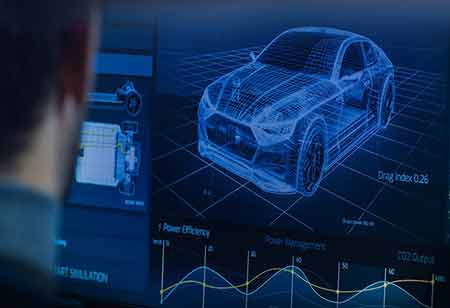Virtual reality is making considerable inroads into the automotive business on various fronts.
FREMONT, CA: Virtual reality (VR) is making considerable inroads into the automotive business on various fronts. Virtual prototyping allows the transfer of design processes, reducing time-to-market and reducing costs and resource consumption. Still, VR is impacting other stages of the manufacturing process in the car industry.
It can help with validation and aid optimize manufacturing operations on the assembly line. Moreover, it supports ergonomics on the production line and in vehicles.
VR is both design & production-driven but also customer-driven. It enlightens on how occupants will perceive new vehicle designs.
VR allows significant efficiency profits in critical areas of automotive manufacturing, contributing significantly to numerous facets of car production:
Design and Prototyping: Vehicle design is usually a lengthy process needing early consideration of interior and exterior aspects. One important impediment to advancement may be a mismatch between original designs and practical engineering requirements. For example, one could have an attractive design but insufficiently aerodynamic to ensure enhanced performance.
Consequently, many backs and forth movements between design and engineering tasks may occur in the quest for the optimal solution. This swallows valuable time and resources.
VR visualization and 3D modeling now allow designers and engineers to render 3D models of CAD car prototypes. This allows designers and engineers to engage 360° with colorful and precise visualizations of vehicle ideas at a 1:1 scale.
This may all arise before physical prototyping, which enables experimenting with alternative combinations much easier, faster, and more cost-effective. Also, it allows early verification and appraisal of specifics, such as interior design aspects.
Automobile Ergonomics: While vehicle performance is vital, driving the car is crucial to effective automotive design. The ergonomic analysis concerns the physical interaction between a vehicle's tenants and its dimensions & interior design.
The ergonomic analysis contemplates driver and passenger posture, impressions of comfort and space, and instrument and mirror arrangement. While VR can be employed to analyze the interior of a car, it can also offer accurate and beneficial data on the driver's experience while driving.
And due to VR technology, all of this occurs well before the vehicle enters any physical manufacturing stage. One way is to have a research contestant wear a full-body tracking suit and evaluate their interaction in a simulated three-dimensional vehicle environment.
Another probability is to combine a simulation driving platform with a 3D driving scenario. The specific effectively takes the 3D model for a simulated test drive, collecting extensive ergonomic data. VR ergonomic evaluation can also be used in the automobile assembly line, optimizing working conditions and increasing productivity.

 Copyright © 2025 AutoTech Outlook. All Rights Reserved | Privacy Policy | Subscribe | Sitemap | About us | Feedback Policy | Editorial Policy
Copyright © 2025 AutoTech Outlook. All Rights Reserved | Privacy Policy | Subscribe | Sitemap | About us | Feedback Policy | Editorial Policy